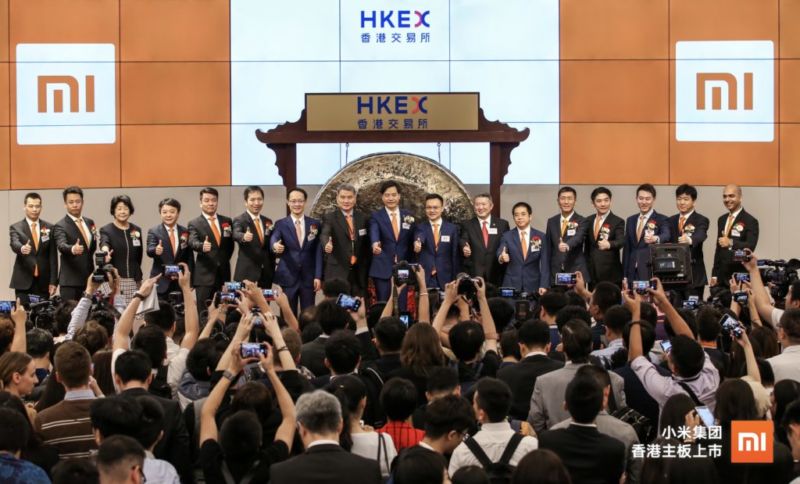
Chinese smartphone maker Xiaomi kicked off its initial public offering (IPO) today. The company debuted on the Hong Kong Stock Exchange under the symbol "1810-HK," and with the Hong Kong market closed after a day of trading, the stock settled in at 16.80HKD ($2.14). This was down from Xiaomi's initial price of 17HKD, but it still values the company at around $50 billion, making Xiaomi the biggest tech IPO in around four years.
The $50 billion valuation means Xiaomi is now the third most-valuable publicly traded smartphone maker, behind Apple and Samsung, but it's still a far cry from the $100 billion target the company had earlier this year.
Xiaomi is a favorite for making value-focused phones that are cheap but good. Flagships from Xiaomi are often several hundred dollars cheaper than the competition, despite the similar specs. Xiaomi is also great at making cheap phones and iPhone clones, but it occasionally flexes its design muscles and delivers a unique-looking smartphone. The company has a huge product lineup outside of smartphones, including everything from robot vacuums to smart TVs to rice cookers.Of course, all of this has very limited distribution—Xiaomi mainly sells in countries like China and India and, until very recently, has mostly stayed away from the western world. The company does have a store up and running in the US, but it doesn't sell smartphones—only things like headphones, battery packs, and cameras. A few months ago, Xiaomi made concrete plans to move into the UK and Europe. Xiaomi claims it will launch in the US by 2019, but a US launch has been promised by the company for several years now. With public shareholders to answer to, Xiaomi might be pushed a little harder to expand.
Xiaomi wants to be an "Internet company" by taking a low profit margin on hardware and making up the difference with ecosystem revenue from software and other services. So far, though, 70 percent of the company's revenue is from smartphone hardware. In China, the Xiaomi's Android phones can exist without competition from Google's ecosystem, but everywhere else in the world, the default place to get apps and other services on an Android device is from Google's much larger, more connected ecosystem.
reader comments
38